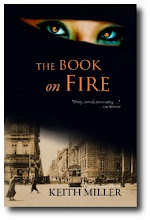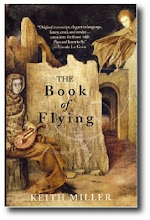
For a while, I’ve been collecting words that entered English via Arabic. I’ve pulled out some of the more interesting examples here. Check out the etymologies for adobe, apricot, assassin, cave (and alcove), chess (and checkmate), drub, and garble. Many nouns brought along with them the Arabic definite article al-, and in some cases (alcove, cave; alchemy, chemistry) English adopted the word twice; once with the article and once without. The photo above is from an early text of
The Thousand and One Nights.
admiral - amr al-bihar, commander of the seas
adobe - al-tub, bricks
alchemy - al-kmiya, from Greek khemia, khemeia, art of transmuting metals
alcohol - in the literature of late European
alchemy - the quintessence of an earthly substance. See kohl in this list.
alcove - al-qubba, the vault. See also cave.
alfalfa - al-fisfisa, fresh fodder
algebra - al-jabr, the restoring of missing parts. This word is reported to have entered Middle English in the sense of “the setting of broken bones.” The modern mathematical sense comes from the title of a book, al-kitab al-mukhtasar f hisab al-jabr wa-l-muqabala (
The Compendious Book on Calculation by Completion and Balancing) by the ninth-century Muslim mathematician Muhammad ibn Musa al-Khwarizm.
algorithm or algorism - al-khwarizm, the Khwarizmian. From the name of the Persian scientist, Muhammad ibn Musa al-Khwarizm, who wrote the first book on algebra. See algebra in this list.
almanac - al-manakh, “the climate”
amalgam - al-malgham
amber - amber/anbar, yellow
apricot - al-birquq (Note that al-birquq now means ‘plum.’ In
A Midsummer Night’s Dream, Shakespeare calls an apricot an “apricock.”)
arsenal - dar al-sinaa, house of manufacturing
artichoke - al-khurshuf
assassin - from al-hashshashn, those who use hashish (cannabis resin).
aubergine - from al-badhinjan, ultimately from Persian badinjan.
average - of disputed origin; possibly from awarya, damaged merchandise
azure - al-lazeward, from Persian lazhvard
caliber - qalib, “mold,” possibly from Greek
calico - Qaliqut “Calicut,” modern Calcutta, city in India
camel - gamal
candy - qandi
carafe – gharraf/gharafa “dip”
caraway - karawiya
carmine - ultimately from Sanskrit krmi-ja
carob - kharrub, (1) locust; (2) carob bean
cat - qotta, itself possibly derived from Latin
cave - al-qubba, the vault (see alcove in this list)
check - shah, “king” - from Persian
checkmate - shah mat, “the king is dead.”
chemistry - see alchemy in this list
chess - from Old French eschecs, plural of check (see above)
cipher - sifr, zero
coffee - qahwa, itself possibly from Kefa, Ethiopia, where the plant originated.
cork - qurq
cotton - qutun
crimson - qirmiz, of the dye kermes, from Persian ghermez, red.
date - possibly from Arabic daqal “date palm.”
drub - from adrub, to hit
elixir - al-iksr, (1) philosopher’s stone; (2) medicinal potion. From Greek xerion, powder for drying wounds
emir - amr (The names Elmer and Almira also derive from this word.)
gala - perhaps from Arabic khila, fine garment given as a presentation.
garble - gharbala, sift; ultimately from Latin cribellum, sieve
gauze - qazz, in turn from Persian kazh “raw silk.”
gazelle - ghazal
genie – jinni, spirit
ghoul - ghul
giraffe - zarafa
hashish - hashsh, grass
hazard - al-zahr, chance, name of the pieces used in the game of nard or tawola. It can also represent a type of flower.
jar - jarrah, large earthen vase
jasmine - from French jasmin, from Arabic yas(a)min
julep - julab “rosewater” - from Persian
lacquer - lakk
lemon - laymun and Persian leemo
lilac - from Arabic lilak, from Persian lilak, variant of nilak “bluish,” from nil “indigo”
lime - Arabic limah “citrus fruit,” a back-formation or a collective noun from limun “lemon”
loofah - from the Egyptian Arabic lufa.
lute - al-ud
macabre - possibly from maqbarah, cemetery
macramé - miqrama, embroidered veil
magazine - makhazin, storehouses
marzipan - mawthaban “coin featuring a seated figure”
mascara - uncertain origin; possibly from maskhara, ‘buffoon,’ or from an unknown language. In modern Arabic, maskhara means “to ridicule.”
mask - perhaps from maskhara “buffoon” – sakhira, ridicule
massage - from either Arabic massa, to stroke, or from Latin massa, dough
mattress - matrah, (1) spot where something is thrown down; (2) mat, cushion
mohair - mukhayyar, having the choice
mulatto - disputed etymology; either from Spanish or Arabic.
muslin - derived from the Iraqi city of Mosul, where cotton fabric was manufactured
nadir - nazr, parallel or counterpart
orange - from Arabic word naranj, from Sanskrit via Persian.
racket - rahah, palm of the hand
ream (quantity of sheets of paper) - rizma, bale, bundle
risk - possibly from Arabic rizq, but also argued to be from Greek.
rook - rukh - from Persian
safari - from Swahili safari, journey, in turn from Arabic safar
saffron - zafaran, species of crocus plant bearing orange stigmas and purple flowers.
sash - shash, turban of muslin
satin - probably from Arabic zaytun (referring to a city)
scarlet - siqillat, fine cloth
sequin - sikka, die, coin
sesame - from simsim
shabby - from shaabi, local, popular
sheikh - sheikh, old man; shakha, grow old
sherbet - sorbet, shrub, syrup - sharab, a drink
shufty - (take a look) from shuuf, see - (adopted by British soldiers in North Africa during World War II)
sine - Latin sinus, mistranslation of jayb “chord of an arc, sine,” through confusion with jayb “fold of a garment”
soda - perhaps from suwwada, suwayd, or suwayda, a species of plant
sofa - suffa, stone ledge
spinach - isfanakh
sugar - sukkar, sugar, ultimately from Sanskrit
sumac - summaq, from Aramaic
summit - al-sumut, the paths
tabby (fabric) - attab (attab), deriv. of (al-)attabiyya, quarter of Baghdad where watered silk was first made, named after a prince, Attab
talc - talq, from Persian
talisman- a blend of the Arabic loan from Greek and the Greek itself
tambourine - a small tambour, from tanbur - from Persian
tariff - tarfa, act of making known; notification
tarragon - tarkhun
tobacco - tabbaq
traffic - tafriq, distribution
typhoon - a blend of Arabic tufan (ultimately from Greek) and the completely independent Cantonese word taaifung
zenith - samt, see summit
zero - sifr
One final word: the Spanish cry, "Olé!" is from the Arabic, "Allah!"

















































